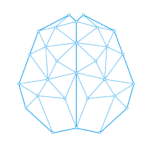Estimated reading time: 6–8 minutes
From Buttons to Machine Learning
Not long ago, automation meant programming a machine to repeat a task.
A robotic arm would weld, a conveyor would sort, a sensor would alert if something went wrong.
Everything worked perfectly — as long as nothing changed.
But the world changes constantly: new materials, temperature variations, supply chain issues, unpredictable demand.
That’s where traditional automation begins to show its limits.
💡 Here’s where AI comes in.
It doesn’t just follow orders — it learns from the environment, recognizes patterns, and makes small but smart decisions like adjusting a temperature, anticipating a failure, or alerting when a component behaves differently.
AI Is Already Around You
Most companies that say “we don’t use AI yet” are actually using it — they just don’t realize it.
- When a system detects a defect without human intervention → that’s computer vision.
- When a turbine knows it needs maintenance before breaking down → that’s predictive analytics.
- When a platform automatically adjusts its energy consumption → that’s AI optimization.
💡 Fun fact: In most cases, AI doesn’t replace people — it frees them from repetitive tasks so they can focus on what requires human judgment and creativity.
The Power Behind It: Data
AI doesn’t come from nowhere.
Behind every smart decision are thousands of data points collected by sensors, cameras, or control systems.
What used to be a sea of unreadable numbers is now turned into clear, actionable insights.
For example:
A solar plant can analyze millions of images to detect tiny shadows or dust that reduce efficiency.
A factory can compare production data from each shift to adjust machine speed and avoid defects.
💡 Quick takeaway: More data doesn’t mean more control — it means better understanding.
And that changes how every industrial process is managed.
Humans and Machines: A New Partnership
One of the biggest fears about AI is job loss.
The truth is that the new industrial era doesn’t need fewer people — it needs people who can work smarter with intelligent tools.
The operator who once monitored ten machines can now supervise a hundred, supported by live dashboards and automatic alerts.
The engineer no longer hunts blindly for failures — the system shows where to look first.
💡 Insight: AI doesn’t eliminate human work — it amplifies it.
Decisions become faster, safer, and better informed.
A Quiet but Unstoppable Change
Digital transformation in industry doesn’t happen overnight — it happens in layers.
First come the sensors, then the data, then the models, and finally the autonomous decisions.
Each step improves efficiency, reduces downtime, and increases quality.
In just a few years, talking about “smart factories” or “connected energy” will be as normal as talking about Wi-Fi today.
💡 Tip: You don’t have to do everything at once.
The secret is to start small — prove value — and grow from there.
Neuron-e’s Role
At Neuron-e, we help companies take that step — whether it’s the first or the next.
From data analysis and visual inspection to predictive maintenance and energy optimization, we build systems that think, learn, and act reliably and safely.
It’s not just about technology — it’s about making industry work better every day, with less waste, fewer errors, and more insight.
Conclusion
Artificial Intelligence is no longer the future — it’s the new normal in industry.
It’s inside every decision, every sensor, every small improvement that often goes unnoticed.
And when used with common sense, AI becomes the perfect partner to human ingenuity.


